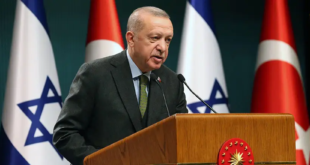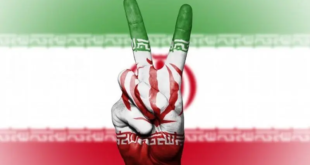OCCUPIED JERUSALEM — The Israeli Cabinet yesterday formally approved the evacuation of the remaining settlements in the Gaza Strip and four in the West Bank, as bulldozers tore down 30 houses in the Nissanit settlement, the first large-scale demolition of settler homes in the evacuated Gaza settlements.
An Israeli court also placed a Jewish right-wing extremist from the settlement of Tapuach in the northern West Bank, who is suspected of being a member of the outlawed and racist anti-Arab Kach Movement, under administrative detention over fears he could attack Palestinians during the pullout.
An extremist from the same settlement shot dead four Arab Israelis on August 4 in northern Israel in a bid to disrupt the pullout.
On August 17, the first day of forcible evacuations from Gaza, a settler from another settlement in the northern West Bank shot dead four Palestinians in the West Bank.
In the West Bank, settlers traded blows with Israeli soldiers and slashed tyres of army jeeps near Sa-Nur, one of the four small settlements in the occupied West Bank to be evacuated later this week.
Israeli security officials expect violent resistance during the forcible evacuation of Sa-Nur and Homesh, where some 2,000 anti-withdrawal opponents have camped out.
“We expect some harsh resistance there,†Israeli army spokeswoman Maj. Sharon Feingold told the Associated Press. “We know that some of them are armed, and we’re still in dialogue with them.â€
In comments at the start of Sunday’s Cabinet meeting, Israeli Prime Minister Ariel Sharon called acts of violent resistance to the pullout “hooliganism†and said Jewish settler leaders were exploiting the withdrawal for their own political agenda. The Israeli government is compensating evacuated settlers an average of $200,000-$300,000 per family.
In Gaza, meanwhile, crews demolished settlement houses yesterday as part of an agreement with the Palestinian Authority to clear the land for Palestinian development.
Israeli bulldozers razed more than 30 stone houses in the Nissanit settlement in northern Gaza, marking the first large-scale demolition during Israel’s Gaza pullout. Several mobile homes in a tiny outpost were torn down Friday.
That, however, would represent one of the few areas of agreement between Israel and the PA regarding the withdrawals.
In comments to Voice of Palestine Radio yesterday, PA Prime Ministerial Spokesman Samir Hleileh said “no progress†has yet been achieved on outstanding issues, such as control over borders and the movement of people and goods.
“We are still discussing issues of administrative arrangements at the [border] crossings and arrangements for replacing the “back-to-back†system with a “door-to-door†system [for the movement of goods]. No tangible progress has been achieved regarding the Rafah crossing and the airport.â€
Hleileh was speaking before a meeting between Palestinian President Mahmoud Abbas and US Assistant Secretary of State David Welch, during which Welch said Israel’s pullout will help reenergise the US-backed roadmap plan for peace.
“The United States views the Israeli disengagement from Gaza as an important opportunity to reenergise the roadmap to take further steps forward toward a better future for Israelis and Palestinians,†Welch told AP.
Palestinian negotiator, Saeb Erekat, said the two sides agreed that “Gaza will not be first and last.â€
It also emerged yesterday that the 600 residents of Netzarim, the last Gaza settlement to be evacuated, are to be relocated in dormitories in a college in the West Bank settlement of Ariel. Other Gaza evacuees have also resettled in temporary housing in the West Bank.
Ariel is one of the major West Bank settlement blocs Israel intends to hold on to in a final peace deal with the Palestinians. All settlements in occupied territory are illegal according to international law.
Yesterday also marked the day 36 years ago when an Australian set fire to Al Aqsa Mosque. Israeli police have in recent weeks warned that far-right Jewish groups might try to damage or destroy the mosque, the third holiest in Islam, in a bid to derail the withdrawals from settlements in the Gaza Strip and the West Bank.
Marking the occasion, PA minister of Islamic Waqf, Sheikh Yousef Salameh, warned that the 1969 attempt to destroy Al Aqsa would “not be the last.â€
“We regard the threats against Al Aqsa Mosque as extremely serious. We lay the complete responsibility [for the protection of Al Aqsa] on the Israeli government since it is obliged to protect religious sites in the occupied territories according to the Geneva conventions.â€
 Eurasia Press & News
Eurasia Press & News



